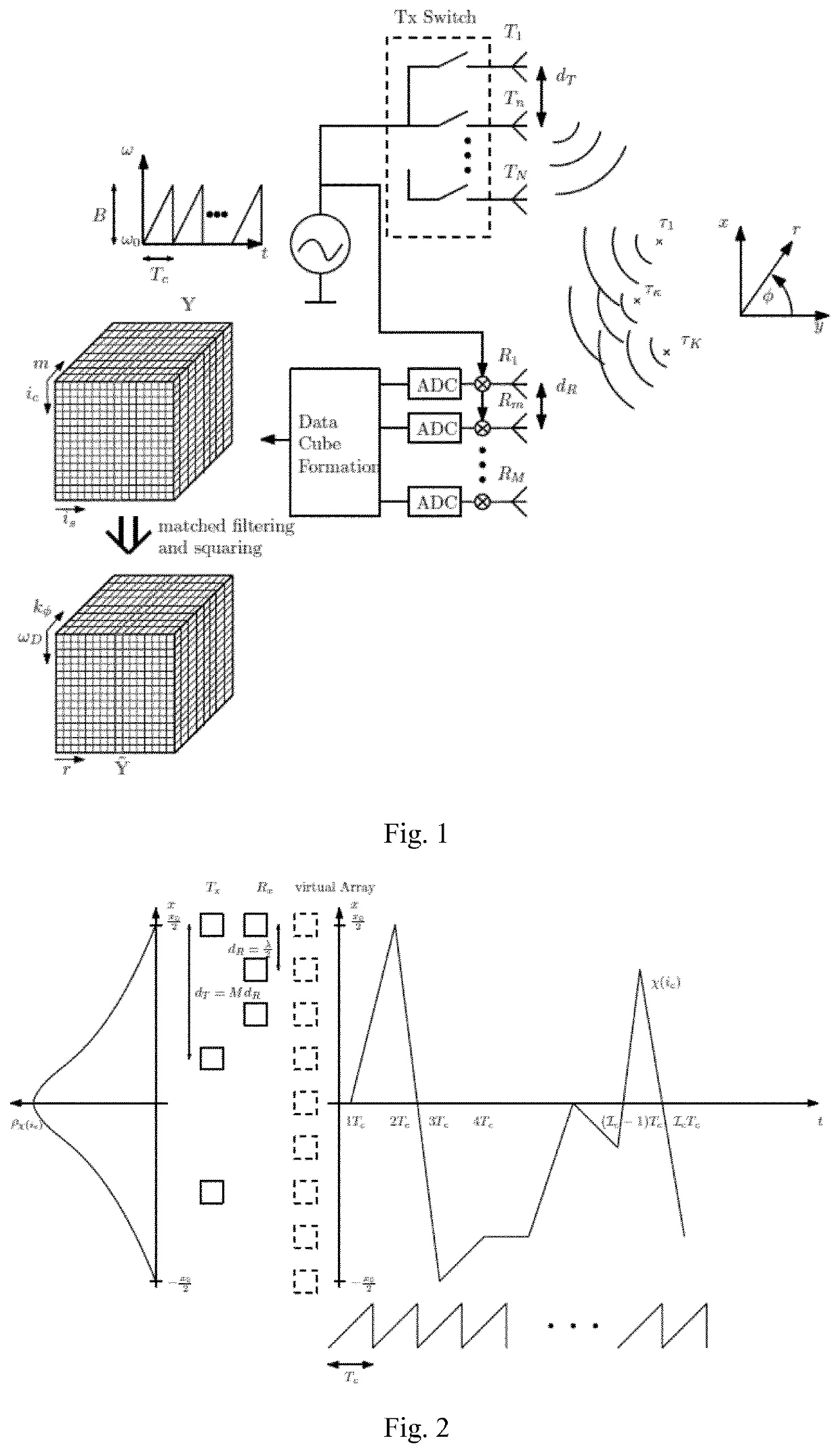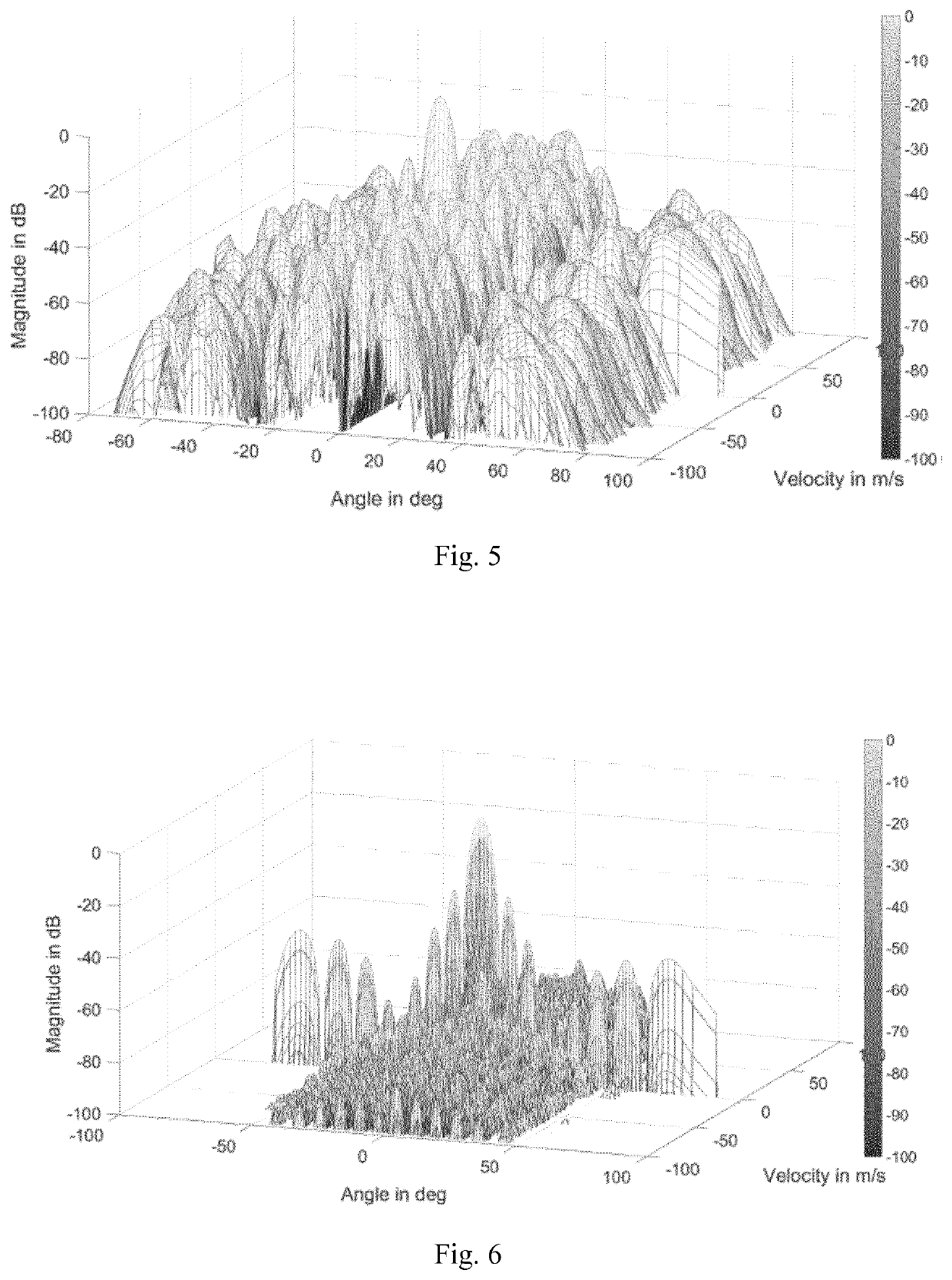Method and system for obtaining an adaptive angle-doppler ambiguity function in MIMO radars
a technology of ambiguity function and angle-doppler, which is applied in the direction of differentially interacting antenna combinations, instruments, antennas, etc., can solve the problems of propagation delay, false alarm, and inability to fix apriori, so as to reduce the impact of strong targets, suppress angle-doppler coupling, and enhance low-cost target detection
- Summary
- Abstract
- Description
- Claims
- Application Information
AI Technical Summary
Benefits of technology
Problems solved by technology
Method used
Image
Examples
Embodiment Construction
[0067]In the following, like numerals will be used to indicate like elements.
I. INTRODUCTION
[0068]Embodiments of the present invention involve one or more of the following considerations. It should be noted that the presented FMCW implementation serves only for illustration purposes and the PCM principle is compatible with other radar waveforms such as OFDM or PMCW.
[0069]A phase center motion is nothing other than a space time code of a certain signal. Therefore, one signal can have different space time codes. It can be shown that these space time codes can be orthogonal even though the excitation signal of the antenna elements is the same. The space time code can be expressed by trajectories within the antenna array, therefore, orthogonality in trajectory is introduced as a new degree of freedom.
[0070]A random Phase Center Motion (PCM) technique is presented herein, based on Frequency Modulated Continuous Wave (FMCW) radar, in order to suppress the angle-Doppler coupling in Time Di...
PUM
 Login to View More
Login to View More Abstract
Description
Claims
Application Information
 Login to View More
Login to View More - R&D
- Intellectual Property
- Life Sciences
- Materials
- Tech Scout
- Unparalleled Data Quality
- Higher Quality Content
- 60% Fewer Hallucinations
Browse by: Latest US Patents, China's latest patents, Technical Efficacy Thesaurus, Application Domain, Technology Topic, Popular Technical Reports.
© 2025 PatSnap. All rights reserved.Legal|Privacy policy|Modern Slavery Act Transparency Statement|Sitemap|About US| Contact US: help@patsnap.com



